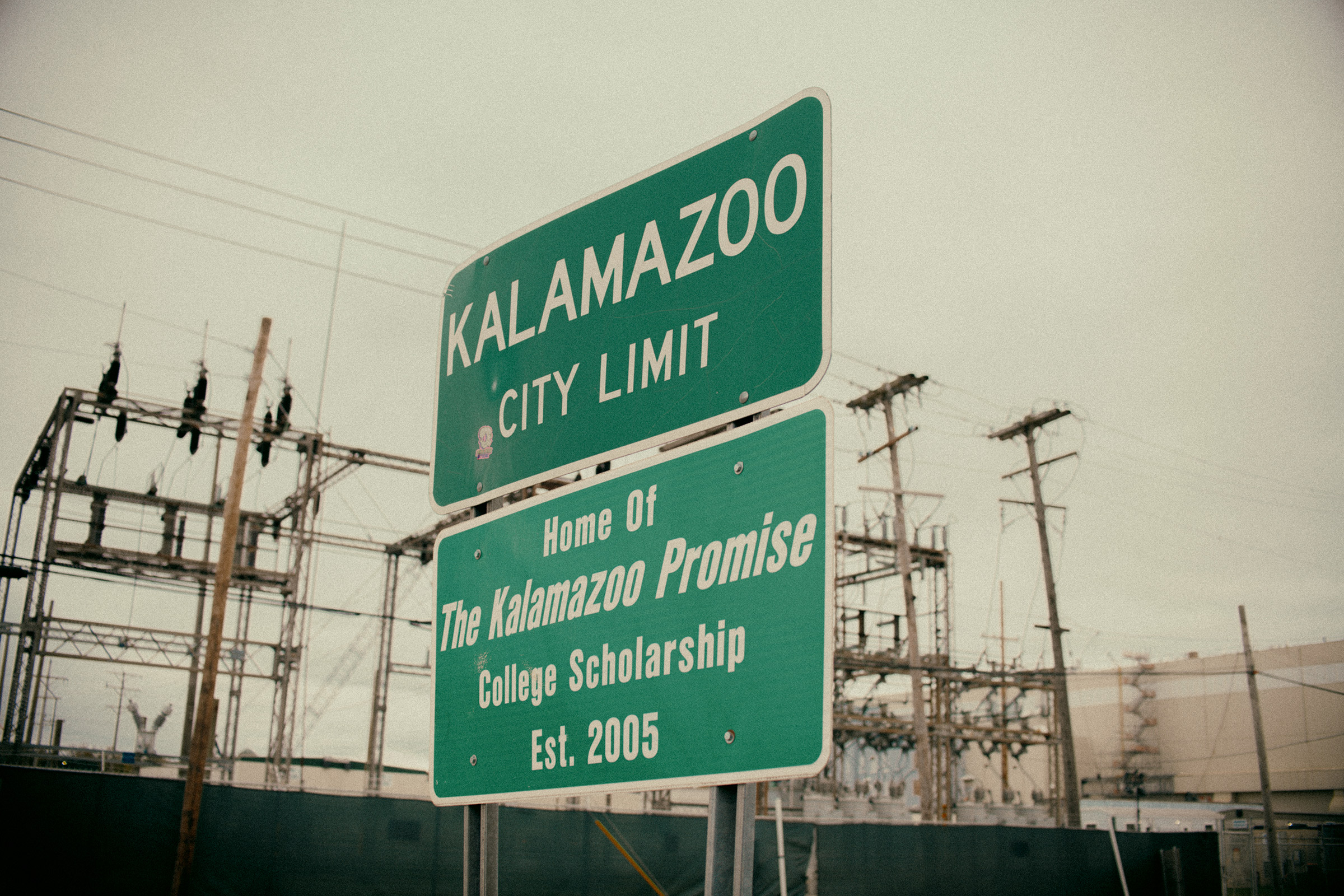On the steps of city hall, Mayor David Anderson hollered a guttural “Wahhh!!!” and shot his arms into the sky to celebrate, looking like an inflatable air dancer blowing in the wind.
“Four! Hundred! Million! Dollars!” he shouted, in July, to city residents in Bronson Park, a leafy plaza adorned with bronze busts and plaques honoring pioneers and philanthropists.
Anonymous donors had just given what is thought to be the largest-ever gift to support a municipality, and for city officials, it felt like winning the lottery. It was also a win for two of Kalamazoo’s richest men, philanthropists William Parfet and William Johnston, who created the foundation that received the money and that will determine how most of it is spent.
Since the Two Bills, as they’re known to locals, launched the Foundation for Excellence in 2017 to close budget gaps in their cash-strapped city—reportedly pledging $70 million of their own money to do so—the nonprofit has distributed around $26 million a year to close budget holes, lower property taxes and fund a wish list of projects.
Instead of the empty storefronts and vacant lots that characterize many Rust Belt cities, Kalamazoo today is a busy hive of spending. City crews are repairing sidewalks, repaving pickleball courts, building a splash pad for kids in a low-income neighborhood and replacing lead pipes, their work marked by orange-and-white construction barrels and closed roads. Hundreds of children have been able to attend free summer camp and go online thanks to routers and Internet service paid for by the Foundation. Once-cash-strapped nonprofits are expanding their missions, helping residents get job training, do their taxes and adjust to life after prison.
Read more: Behind America’s Widening Wealth Gap
But beyond the construction crews and new pickleball courts, a tension hums below the surface of Kalamazoo’s budget miracle. There’s a long history in the U.S. of the rich stepping in to fund cultural amenities like museums, but lately they’ve started stepping in to fund projects—in Kalamazoo and elsewhere—that have long been perceived as the government’s responsibility. It’s a scenario that critics say sets the stage for the super wealthy to control more and more aspects of public life.
Most Popular from TIME
“My biggest fear around this is that you can now buy influence in a city,” says Shannon Sykes-Nehring, who was a city commissioner when the Foundation for Excellence was approved and who has remained a vocal skeptic. “The way things are supposed to work in a democracy is that there’s one person, one vote; but now the consideration is, How can we keep the city afloat if we upset the people paying our bills?”
Kalamazoo, population 74,000, is used to serving as a model; in 2005, anonymous donors started the Kalamazoo Promise, which pays for college tuition at Michigan colleges and universities for students graduating from the city’s public schools. Now, in an era when billionaires control more wealth than half of the U.S. population combined, Kalamazoo is trying to harness the power of extreme riches to balance its budget.
“For years and years—centuries to come—we can improve, grow, invest, create, aspire differently than we’ve ever been able to do before,” Bobby Hopewell, Kalamazoo’s longest-serving mayor, who stepped down in 2019, told me recently.
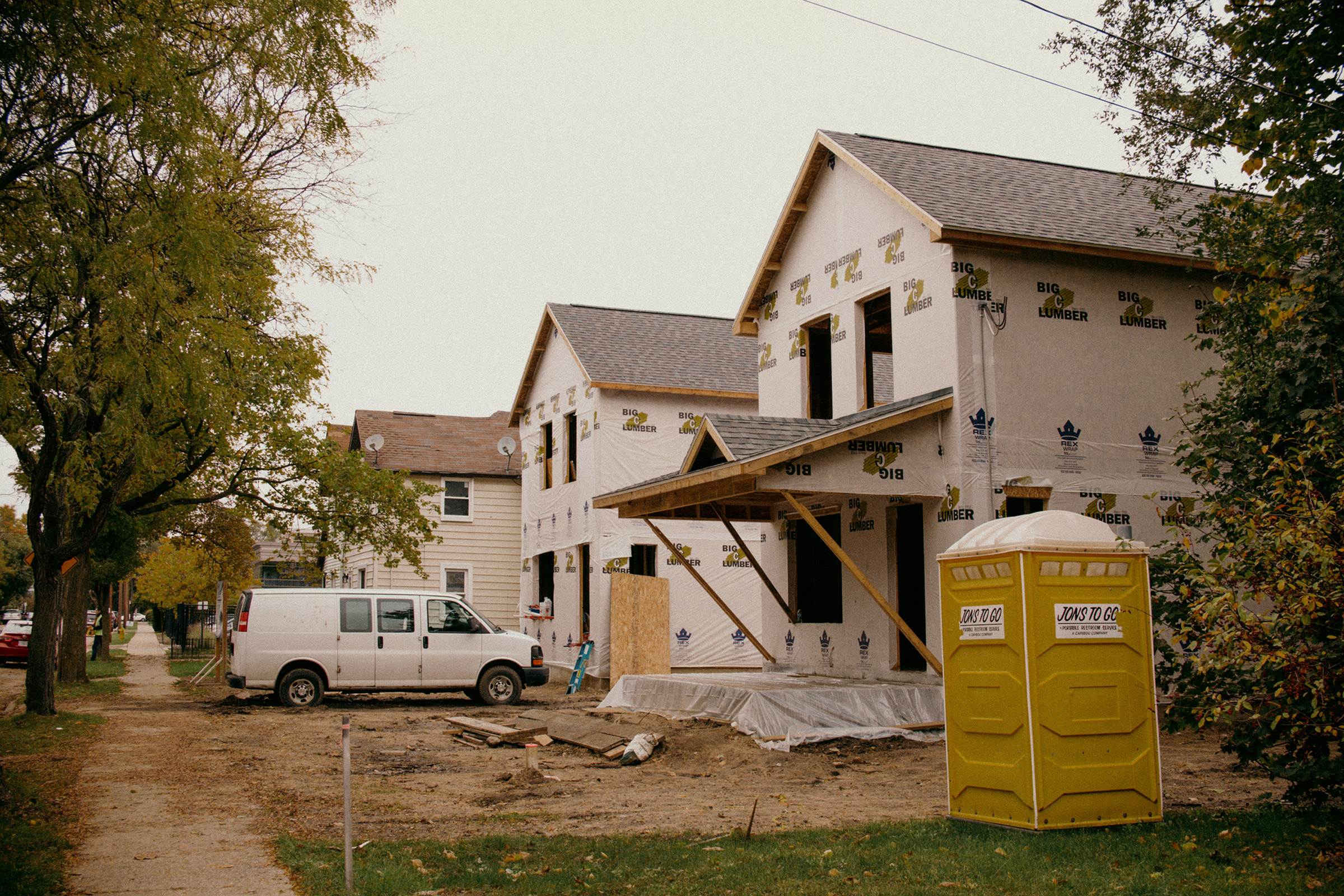
When they created the foundation, Parfet and Johnston required the city to scrap a proposed income tax and to decrease property taxes. The funds don’t come in one lump sum but over annual installments, a system that critics say undercuts democracy by essentially holding Kalamazoo hostage to the whims of wealthy donors. Johnston and Parfet pledged to raise enough money to keep the foundation going “in perpetuity,” but if those funds don’t materialize, the city risks insolvency. While only a handful of people know where the additional $400 million announced over the summer is coming from, suspicion falls on none other than the Two Bills, which would give them even more control over Kalamazoo and its people.
The foundation says it does not disclose the identity of its anonymous donors; the $400 million pledge is revocable if any of the staff who know the donors disclose that information publicly. And the Bills disagree with the idea that giving money to the city buys them influence. “Nobody feels that they’ve got power over anyone else, or they’re better than anyone else,” Johnston told me. “We’re all equals in this, trying to make this a great city for everybody.”
A case study in the power of the super rich
However one feels about the foundation, Kalamazoo is a case study of the power of the super rich at a time of growing wealth inequality. There were roughly 745 U.S. billionaires by October 2021, about 11 times the number that existed in 1990. They are worth $5 trillion, two-thirds more than the total wealth held by the bottom 50% of Americans. Billionaires are sending tourists into space, deploying the National Guard to the border, and funding the budgets of cities like Kalamazoo, while the rest of us look on, some awed, some disgusted.
Meanwhile, since the tax cuts of the 1980s, local governments have faced mounting budget problems that are expected to grow as they struggle to pay pensions and fulfill other obligations, says David Callahan, the editor of Inside Philanthropy and the author of The Givers: Wealth, Power, and Philanthropy in a New Gilded Age. There are more and more cities that need help to fund public services that have been cut, Callahan says, and more and more rich people who have money to give. But those deals can set a dangerous precedent.
“What could go wrong is [if] the billionaires don’t like what the city is doing, and say, We’re not going to keep giving you money unless you do things differently,” Callahan says. “In a small city like Kalamazoo, with not that many resources of its own, the power of big donors giving tens of millions of dollars is that much greater.”
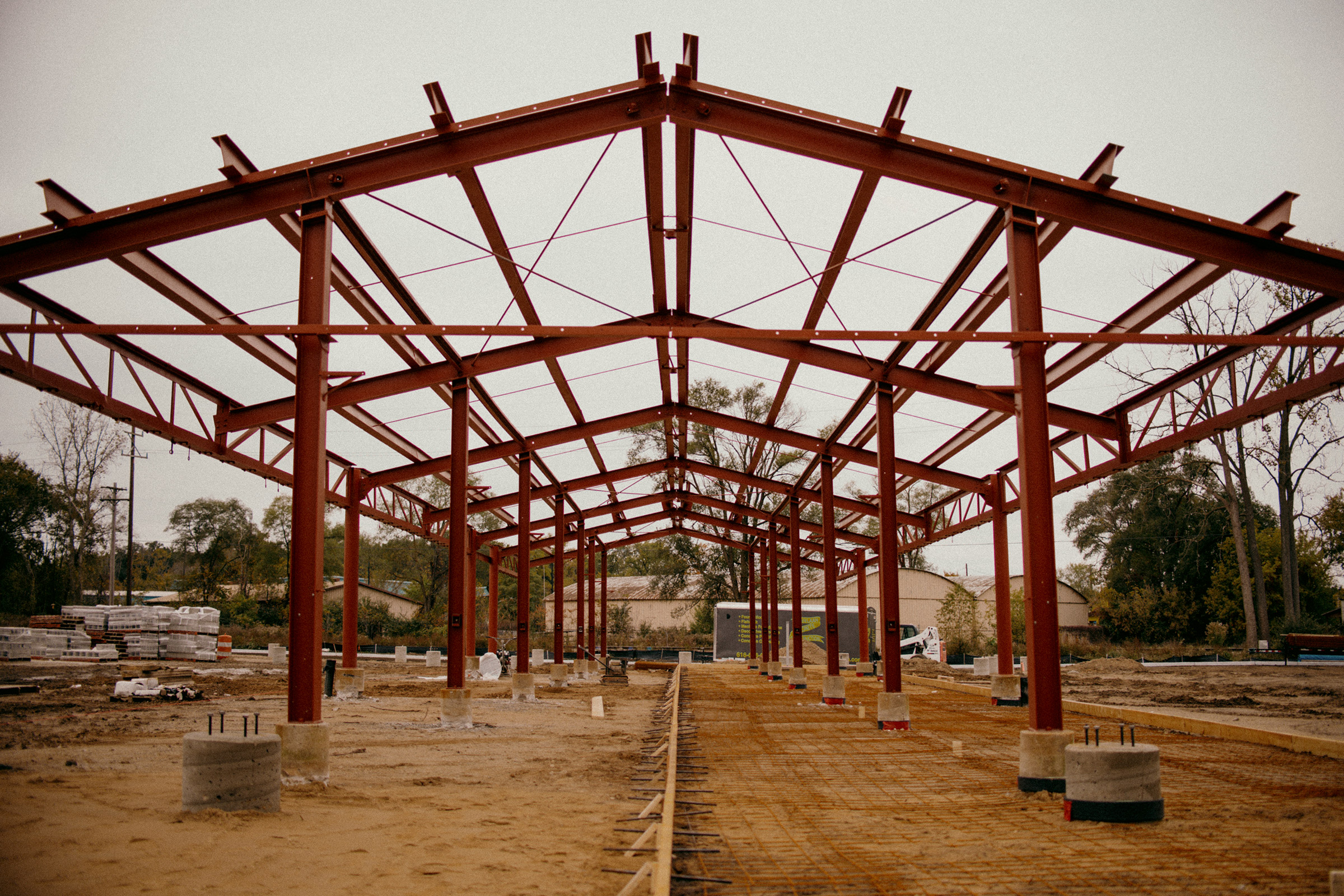
Extreme wealth has always had a comfortable home in Kalamazoo. You can’t walk a few blocks without seeing a building with names of prominent philanthropists like Upjohn or Stryker. A century-old private dining club perches by the front steps of City Hall, where a crowd of mostly white patrons dined at white tablecloths on a summer evening. Public school enrollment has been on an upswing since donors launched the Kalamazoo Promise.
The two Bills have long been at the center of this philanthropic community. Johnston, a former school principal and teacher, is married to Ronda Stryker, an heir to the Stryker Corporation, a medical equipment company. In 2011, the couple gave $100 million to create a new medical school in Kalamazoo named after Ronda’s grandfather, Homer Stryker.
Johnston, who was wearing glasses with bright blue frames when we talked on Zoom, now runs an asset management company whose real estate arm owns and manages 2.5 million square feet of property across the region, including the Radisson Plaza Hotel, a centerpiece of downtown Kalamazoo. He’s given to both Republican and Democratic candidates in Michigan, including Govs. Rick Snyder and Jennifer Granholm.
For years and years—centuries to come—we can improve, grow, invest, create, aspire differently than we've ever been able to do before.
Parfet, a political conservative who has donated heavily to state and national Republican campaign committees and to the campaign of Donald J. Trump, is an investor who spent decades as an executive and board member at big companies like Stryker and Monsanto. His great-grandfather founded the Upjohn pharmaceutical company, which was acquired by Pfizer in 2002; the Upjohn family also founded an employment-focused research institute in Kalamazoo.
The ‘X of death’
Despite this wealth, Kalamazoo has been struggling.
Over the past few decades, wealthy white residents fled to the suburbs, while companies moved outside of city limits. Although Kalamazoo is home to two hospitals, a university, and a college, these big nonprofit institutions don’t pay property taxes. Politics plays a role too; Former Gov. Snyder, whom Parfet has supported financially, changed the state’s revenue-sharing model so that local communities kept fewer sales tax dollars. These changes meant that the city was approaching what assistant city manager Laura Lam calls the “X of death,” where revenues and expenditures would permanently cross.
“Every conversation was about cut, cut, cut,” she says of city budget discussions at the time. After a series of panels examined ways for the city to turn itself around, the commission concluded in 2016 that it would have to ask voters to pass an income tax.
Read more: What Life is Like for Millions of Americans Facing Financial Ruin Because of the Pandemic
Sykes-Nehring, who was a city commissioner at the time, says there were some advantages to such a tax. Around 81% of Kalamazoo workers lived outside city limits, and an income tax would capture some of their earnings. Since the city planned to lower property taxes to offset the creation of the income tax, some residents would actually pay less in taxes than before, Sykes-Nehring says.
The city was in the process of designing a calculator to help residents figure out what they’d owe under the new plan when Sykes-Nehring says she was called into city hall on a weekend. The city manager told her that the Bills did not approve of the income tax and were threatening to spend heavily to defeat it. They had an alternative proposal: if the city scrapped the income tax, they’d fund Kalamazoo with money from a new foundation.
If we lowered the tax base, we felt we could be more competitive; that would create more investment in the city, thereby creating more tax revenue in the future.
The Bills say that an income tax was the opposite of what Kalamazoo needed. After years of revitalization efforts, restaurants were opening and new people were starting to move to Kalamazoo. An income tax “would perhaps be a form of a death knell to this little bit of momentum we were having,” Parfet told me. No one wanted to live in a city where they’d pay more money for fewer services, he argued, and Kalamazoo would lose out to other Midwestern cities competing for residents.
“If we lowered the tax base, we felt we could be more competitive; that would create more investment in the city, thereby creating more tax revenue in the future,” Johnston said, speaking from a vacation home in Key Largo, Fla. “That would be good for the city.”

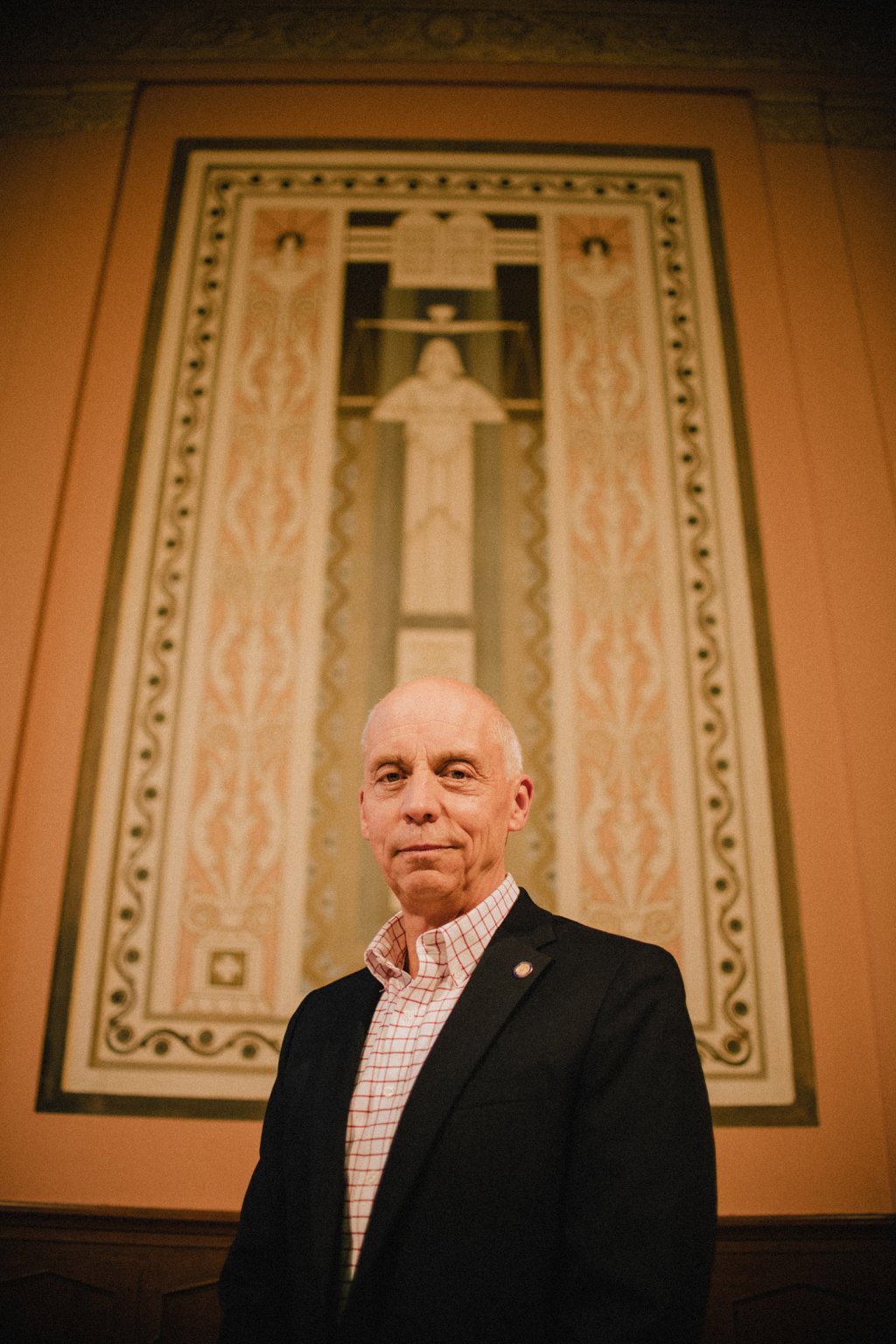
The Foundation for Excellence is much more than an alternative to an income tax. Every year, the foundation gives a grant to the city; this year it gave $25.78 million. According to the agreement signed between the Bills and the city, Kalamazoo then must spend the money in two ways. The biggest chunk goes toward reimbursing Kalamazoo for reducing property taxes—$13 million in fiscal year 2021. A second bucket goes to stabilizing the city budget; $4.2 million in 2021. Then, the city “may” fund a third bucket, which was $8.5 million for 2021, and which goes toward “aspirational projects” for the city.
Exactly how those aspirational projects are chosen is a little unclear. In 2016, the city launched a project called Imagine Kalamazoo 2025, holding open houses, community picnics, and online surveys that asked residents what they wanted to see in their city. They got about 4,000 “points of contact”—roughly 5% of the population—including about 1,200 people who had attended meetings, 1,000 people who had responded to surveys, and 1,000 who commented on a “living wall”—essentially a plywood board in a park that graffiti artists and others could tag with ideas. Imagine Kalamazoo 2025 “is the vision that guides the funding,” says Steve Brown, the foundation’s manager, in that the foundation uses it to recommend projects as part of its grant to the city.
But it’s the foundation staff and board who decide exactly how the money is spent. The foundation sends an annual proposed grant to the city, and the city commission then votes whether to approve the money. It has never rejected the foundation’s suggestions.
There's an outside unelected entity that holds the purse strings.
For some detractors, the aspirational projects are just a way to make the city feel better about letting the Bills talk it out of an income tax, and a way to mask that the way the money is spent benefits some residents more than others. They worry that the foundation is inherently undemocratic because only three of its 15 board members are elected officials. The rest include the city manager, former mayor Bobby Hopewell, and applicants from various “stakeholder” groups like arts and business who are hand-picked by the Kalamazoo Community Foundation, a separate philanthropic organization that has a Parfet and an Upjohn on its board. The city commission then votes on the suggested board members, but the Foundation for Excellence board can reject the proposed stakeholder applicants.
“There is a public stance by the city that citizens have input; I have not seen any instance where the public has significant input,” says David Benac, who lost to David Anderson in the 2019 mayoral race and who has become a vocal opponent of the foundation. “There’s an outside unelected entity that holds the purse strings.”
The lines dividing that entity and the city are blurry. All documents about the foundation live on the city’s website—the Foundation for Excellence does not have a separate website. The foundation has no employees, but it pays the salaries of Kalamazoo city employees who have been hired as foundation staff and has spent $1.7 million on personnel since 2017.
‘Two shalls and a may‘
Kalamazoo has long lived with the contradictions of relying on the generosity of the very rich; multiple people told me that elected officials have long factored how “the two Bills” would react to policy decisions. Kalamazoo is not unique in this; money buys influence in politics, even more so since the 2010 Citizens United Supreme Court case.
But to Sykes-Nehring, the creation of the foundation “institutionalized” the Bills’s influence at a time when the city commission was finally getting more progressive. “The truth is, the people who want to donate to fund a city are the people who want to buy a city government,” she says.
When she saw an early diagram showing that the foundation would be funded by big companies like Stryker as well as by universities and hospitals, Sykes-Nehring says, she suggested that these organizations could instead just pay some fees to the city, since some are exempt from property taxes. She says that city manager Jim Ritsema told her if they went that route, “then you all will be able to continue the status quo.” In other words, says Sykes-Nehring, one of a handful of progressive candidates elected to the city commission in 2015, “They didn’t like the direction the city was going in and they wanted influence, so this ensured some influence.” Ritsema declined to comment.
Slowly, a handful of other Kalamazoo residents have become more skeptical of the foundation too. The city commission had initially wanted to ensure that donors to the foundation could not be anonymous, but the foundation recently accepted two huge anonymous donations—$86.6 million in 2020 and the $400 million in July. It said the foundation would be transparent, but when Rev. Nathan Dannison, one of the foundation’s first board members, asked for more information about where the city was investing its endowment, he says he was stonewalled. He wanted to make sure the city wasn’t making money off tobacco or petroleum firms or from companies that created weapons of war.
I don't see anybody else gaining other than our children, our neighborhoods, the folks that need jobs, our businesses that we were able to help get through COVID.
The city had said there would be no strings attached to the money, but founding documents stipulated there were two things the city had to do in exchange for funds—lower property taxes and balance the budget—and one thing it could do if it wanted to—the aspirational projects. “The guiding principle was two shalls and a may,” Dannison says.
Because of the pandemic, meetings that were supposed to be held with public comment are still held on Zoom, and the public can only comment by calling in before the meeting and leaving a voicemail. And though the initial announcements about the foundation talked about funding Kalamazoo “in perpetuity,” financial documents hint that the Bills were not raising as much as they had hoped. By the end of 2020, the foundation had $95.7 million in assets, far short of the $500 million goal.
Last spring, as the nation’s focus turned to racial inequity in the wake of the death of George Floyd, some residents calculated that the money wasn’t being distributed in a racially equitable way. About half of the annual grant to the city goes to lowering property taxes of Kalamazoo residents. This disproportionately benefits white people, because they are the majority of Kalamazoo’s homeowners, and their homes are worth more than those of Black homeowners.
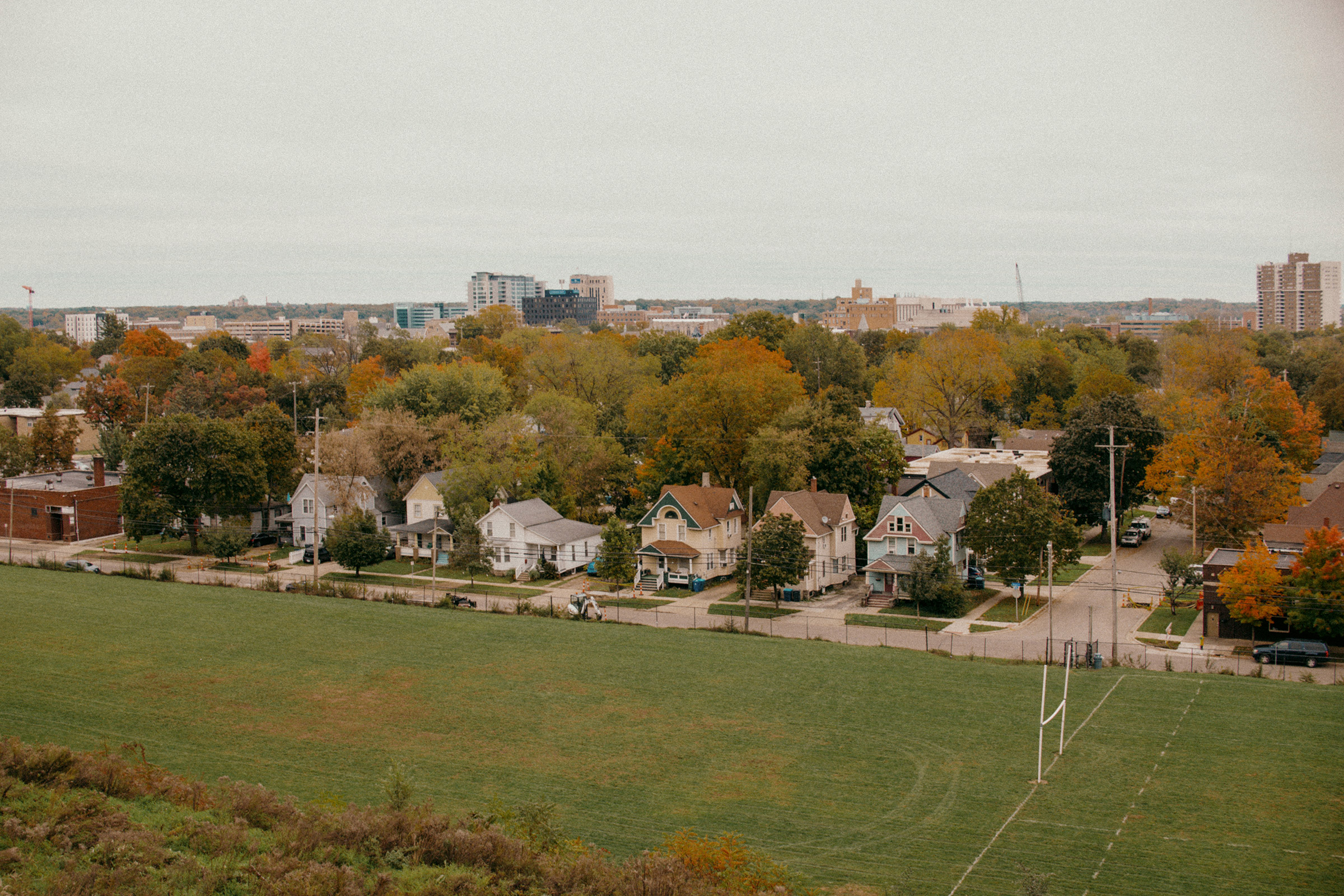
“If you think that hundreds of millions of dollars given to a city is automatically a good thing, you’re so wrong,” says Matt Smith, a local librarian who gives talks about the history of redlining in Kalamazoo. Smith is outspoken about the racial inequities he says are fueled by the foundation: “It’s widening the wealth gap.”
Smith has calculated that the city’s four whitest neighborhoods, which are also its wealthiest and which have the highest home values, receive around 41% of the total tax breaks annually, around $4.5 million. The Northside neighborhood, which is 91% people of color, receives 3.9% of the tax breaks, and the Eastside, which is 80% people of color, receives 2.4%, Smith says. Both the Northside and Eastside are majority renters, who do not benefit at all from the tax breaks.
Though the foundation was created with the pledge to “end generational poverty,” the largest chunk of the money is going toward property tax breaks for the people who have already accumulated wealth through homeownership, some of whom own property in Kalamazoo but don’t live in the city. More than half of the foundation grant for 2022—nearly $14 million, as proposed—will go to tax breaks.
“As soon as anyone who’s antiracist or curious about equity hears the word[s] tax breaks, it is so obvious to us that that’s immediately going to be racially inequitable,” says Smith, who argues that the foundation could instead use money to try to solve the problems of infant mortality, poverty, homelessness and other issues worsened by the country’s wealth gap.
If you think that hundreds of millions of dollars given to a city is automatically a good thing, you're so wrong.
Smith says that the city only engaged a certain type of resident with Imagine Kalamazoo; those with extra time who were already involved in local affairs. He remembers being invited to a white friend’s house and being asked about his vision for the city. He put sticky notes with his ideas up on a wall, only to learn that the day’s activity had been part of Imagine Kalamazoo 2025.
“Here we are, putting sticky notes about infrastructure and bike lanes,” says Smith, who is white, “but are you actually engaging low-income folks, Black folks, renters?”
Read more: How One Day Made the Rich So Much Richer
I walked around the city’s Northside neighborhood, and many of the people I asked about the Foundation for Excellence had never heard of it. Same with Imagine Kalamazoo 2025. Many Northside residents are more concerned about Graphic Packaging International, a paper factory that announced a $600 million expansion on a lot adjacent to its current property on Kalamazoo’s Northside. Residents have long complained about odors and pollution from the factory and oppose a tax abatement recently approved by the city commission. They wonder why property owners are getting tax breaks from the Foundation while low-income neighborhoods still struggle.
“The money is not going to the individuals and neighborhoods who need it most,” says Stephanie Williams, who represented Kalamazoo’s Northside on the city commission for four terms until 2014.
This inequity isn’t a problem that bothers just Smith and Williams. For a city with extreme wealth, Kalamazoo also has a lot of poverty. I visited a dusty lot across the Kalamazoo River, where hundreds of people were living in tents as part of a growing homeless encampment. There was resentment there, toward the city and its lack of resources for people like Terre Haywood, who’d been laid off but couldn’t quickly access unemployment benefits, and who was also going through a divorce. For a little while during the pandemic, the city paid for hotel rooms for the homeless, and if the program had lasted, Haywood says he might have been able to get on his feet. But the program ended, and it was left to volunteers to drop off food and bottled water at the encampment, he told me.
When I asked Haywood what he thought about the Foundation for Excellence, he brought up the property tax breaks. “It’s $400 million for the already pampered,” he said. In October, the city cleared Kalamazoo’s homeless camps, including the one where Haywood was living, enraging many residents.
Many voiced their concerns at a city commission meeting on October 18, though they could only do so by leaving voice mails that were then played in front of the council. “Use some of that $400 million to house people instead of chasing them out of the city,” said one caller, a Kalamazoo resident named Victoria.
I brought some of these concerns to Bobby Hopewell, who was Kalamazoo’s mayor for 12 years and who is the founding director emeritus of the Foundation for Excellence. He disputes the idea that the Bills dictated anything to the city. Hopewell says it was initially his idea to ask philanthropists for this money, because he didn’t want the income tax to create a financial burden on people who were already struggling.
“We’ve never thought about the two Bills,” he tells me while sitting in the garden of a bar in Kalamazoo, talking over the music from a festival a few blocks away. “They have never asked me for anything when we’ve been doing work in this community. There’s never been a phone call to me to say, ‘vote this way.’ ”
The city agreed to lower property taxes because it was going to lower them anyway if the income tax passed, he says; this would have kept it in compliance with a state law on how much cities may tax residents. As for asking philanthropists to fund a city, Hopewell says it might be an unusual approach, but that doesn’t mean it’s bad. “But I’m always about doing things that have never been done before. No one had a cell phone until it was created,” he says.
Read more: Inside the Nation’s Largest Guaranteed Income Experiment
The property tax may benefit white people more, but there are more white people than Black people in Kalamazoo, he says. And just because a government policy helps one group more than another doesn’t mean a city shouldn’t fund it; it still builds roads, even though some people don’t have cars, and makes bike paths, even though some people don’t ride a bike.
Supporters of the foundation say the setup is democratic because the city commission, which is elected by voters, has to approve each year’s grant from the Foundation for Excellence. The commission also has a say in who is on the Foundation for Excellence Board, which includes stakeholders from different neighborhoods and groups like health care, the arts and education.
“I don’t see anybody else gaining other than our children, our neighborhoods, the folks that need jobs, our businesses that we were able to help get through COVID,” Hopewell says.

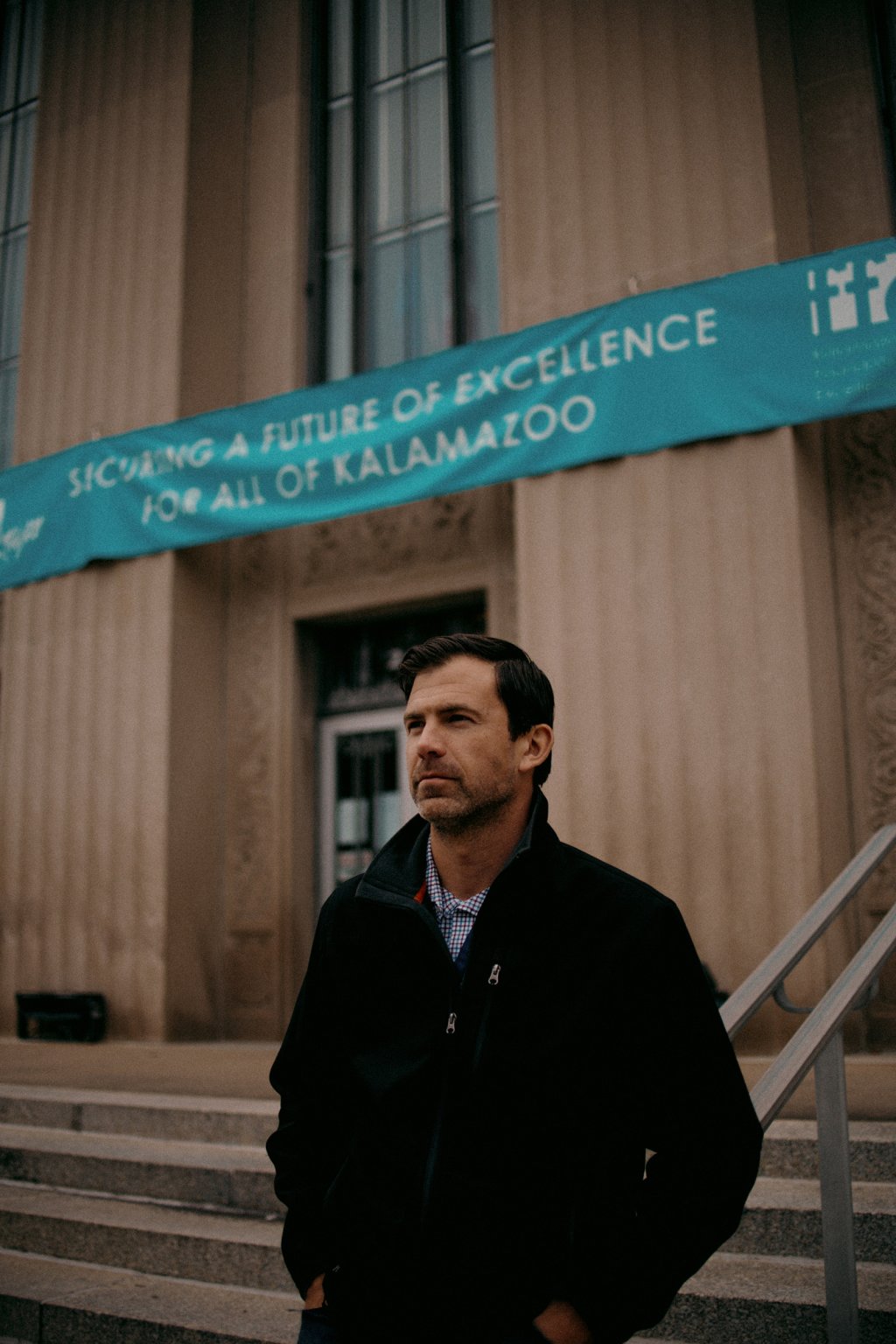
He’s right that the money is funding a lot of good things. I stopped by a city employment and training office that runs a program called Youth Opportunities Unlimited, which matches teenagers and young adults with summer work experiences and pays their salaries. The program has more than doubled the number of students it helps since getting a grant from the Foundation for Excellence, and it now serves around 350. It helped people like Ebube Okpechukwu, 20, learn how to build her résumé and explore the medical field by setting her up in a position that let her work alongside physical therapists. The money “really allows us to think bigger,” says Paige Daniels, who runs the program. “We have money; we can serve more students.”
I stopped by a pickleball court where a woman in roller skates looked meditative as she sailed over the smooth pavement, and I walked on a newly paved sidewalk near a Northside elementary school. I got stuck in traffic near the Kalamazoo farmers’ market, which is being expanded with grants from the foundation, and talked to Ricky Thrash, who recently set up a food truck in the parking lot of his hair salon with help from a $25,000 grant.
I say this humbly: we are able to be innovative, and it's kind of a scary word.
I also talked to Tiyanna Williams, who was about to lose her home because she’d fallen behind on her property taxes, until the city stepped in because one of the aspirational projects is that zero people lose their home to tax foreclosures in the city. The program has enabled 109 people, including Williams, to stay in their homes who otherwise would have been evicted, the foundation says.
“I say this humbly: we are able to be innovative, and it’s kind of a scary word,” Steve Brown, the manager of the Foundation for Excellence, says as we drive from project to project, baking in 95-degree heat. We stop by a new housing complex with 15 apartments set aside for low-income residents and pass dozens of city streets under construction.
It’s a contrast to the city that Kalamazoo would have been without the donor money, Brown says. “We were already in a hard spot. And if we had made that harder,” he says, “it would have gone probably catastrophic.”
A model worth exporting?
There has been some talk of exporting this model to other cities. Ron Kitchens, the former head of Southwest Michigan First, the region’s economic development organization, calls this type of public-private partnership “community capitalism,” and wrote a book about it. In a 2018 interview, he predicted that other cities would replicate it, as they did the Kalamazoo Promise. “It’s a completely different way of doing government and community—it’s unheard-of. But it will be a model,” he said at a policy conference hosted by Detroit’s chamber of commerce.
The city of Jacksonville, Fla., has appointed a chief philanthropy officer to recruit donor money; the state of Michigan created an Office of Foundation Liaison “to broker innovative funding partnerships.”
Meanwhile, in Kalamazoo, this new way of funding a government has begun to seem so normal after five years that candidates for city commission in the city’s election on Nov. 2 didn’t even talk about the Foundation for Excellence. And some of the foundation’s most vocal critics have moved on.
JoVaughan Head, a Kalamazoo resident who was one of the first Black people appointed to the foundation board, says he was called into city hall after posting a critical comment about the foundation on Facebook. He resigned from the board after he says Hopewell and David Anderson—a city commissioner at the time—chastised him for publicly criticizing the foundation. The city declined to comment on Head’s allegation.
“It got really ugly,” says Sykes-Nehring, who also spoke out against the foundation. One co-commissioner threatened to leak details about her past abusive relationship, she says, citing Sykes-Nehring’s calls for transparency. Other colleagues stopped telling her when meetings were being held, she says, which meant she’d have to inspect the fine print of every piece of paper that came into her office to make sure no meetings had been scheduled.
“I started to really worry about my family, whether or not it was worth it to continue on,” she says. In 2019, she resigned from the city commission before her term was up, cut ties with the city and moved to the countryside.
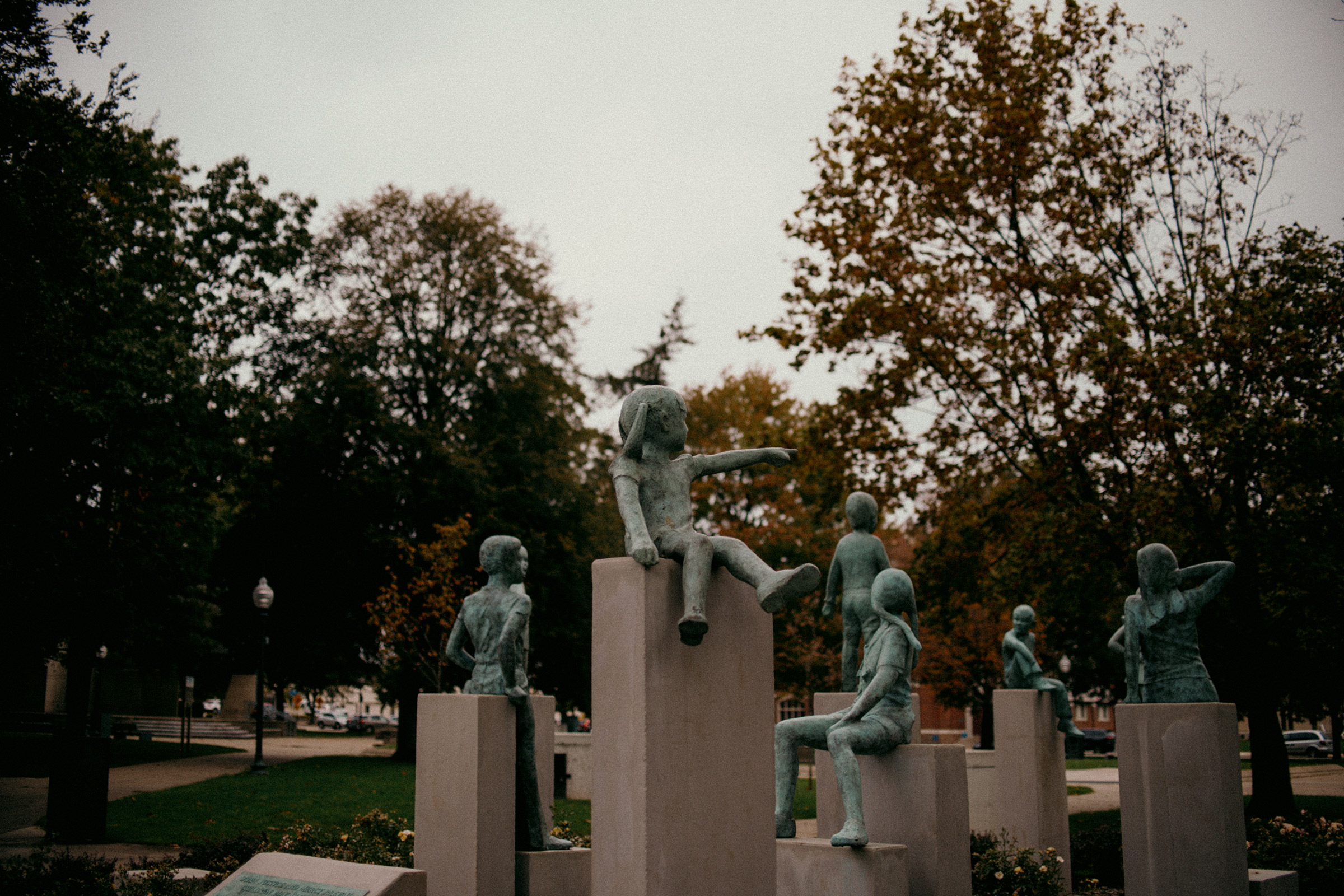
Some foundation skeptics are coming around to the idea that they can’t beat the Bills. But maybe they can tame them.
“If the only future for this country is Jeff Bezos and Mark Zuckerberg on Mount Rushmore, and titans of capital have this never-ending gilded age, then the municipal endowments at least is a way to have some kind of local autonomy,” says Dannison.
Despite his reservations, the pastor says he hopes the foundation will succeed—if only because the GOP-led Michigan statehouse has made it so hard to make any other model of financing work. Other cities in Michigan with financial troubles have filed for bankruptcy or been taken over by an emergency manager—an unelected person who takes power from elected officials in order to implement unpopular budget cuts. These emergency managers have contributed to long-standing infrastructure problems, including Flint’s drinking-water crisis.
Money in politics, in other words, makes it impossible to turn away millionaires and billionaires who want to help a city like Kalamazoo. “The bear is already in the room,” Dannison says. “We can pretend that it is not and hope that it will go away, or we can learn how to become bear trainers and start to get our hands around this thing.”
But Dannison doesn’t want to be that bear trainer. After he organized a counterprotest to a Proud Boys rally in Kalamazoo last year, the city denied him reappointment to the Citizen’s Safety Committee, saying he wouldn’t be able to perform his duties “without bias.”
The situation in Kalamazoo prompted him in March to step down from his position as senior pastor at the First Congregational United Church of Christ and to walk away from the Foundation for Excellence board. Like Sykes-Nehring, he now lives outside of Kalamazoo, in a rural area. He wants to teach his kids to fish and hunt—and to avoid city politics.
—With reporting by Leslie Dickstein and Simmone Shah
More Must-Reads From TIME
- The 100 Most Influential People of 2024
- The Revolution of Yulia Navalnaya
- 6 Compliments That Land Every Time
- What's the Deal With the Bitcoin Halving?
- If You're Dating Right Now , You're Brave: Column
- The AI That Could Heal a Divided Internet
- Fallout Is a Brilliant Model for the Future of Video Game Adaptations
- Want Weekly Recs on What to Watch, Read, and More? Sign Up for Worth Your Time
Contact us at letters@time.com
